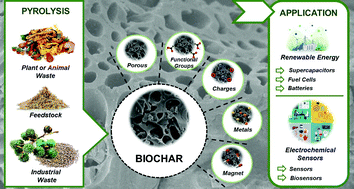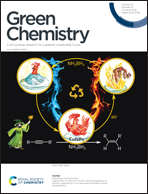State-of-the-art and perspectives in the use of biochar for electrochemical and electroanalytical applications
Abstract
The depletion of natural resources and consequently increase in the importance of environmental conservation are reflected in the scientific community. The search for scientific methodologies or eco-friendly and low-cost materials is becoming more evident and current, for example, through the use of renewable materials. In this review, we have addressed the use of biochar, a low-cost material obtained from renewable resources for the development of electrochemical devices. Biochar is a carbon-rich material obtained from the pyrolysis of biomass under a low-concentration oxygen atmosphere. Normally, biochar has a highly functionalized surface, promoting high sorptive or interaction capacity. This characteristic makes its use attractive, especially for spontaneous preconcentration or the incorporation of species. Here, we have presented some of the main biochar-based devices applied for different strategies, such as sensors and biosensors, supercapacitors, fuel cells, and batteries. The main parameters that directly influence biochar's final characteristics, namely, the influence of pyrolysis temperature, activation treatments, and anchoring of species, have also been detailed. Finally, we have presented some new perspectives in biochar-based electrochemical devices or strategies for the sensing of species, or energy storage and production.

- This article is part of the themed collection: Green Chemistry Reviews


 Please wait while we load your content...
Please wait while we load your content...